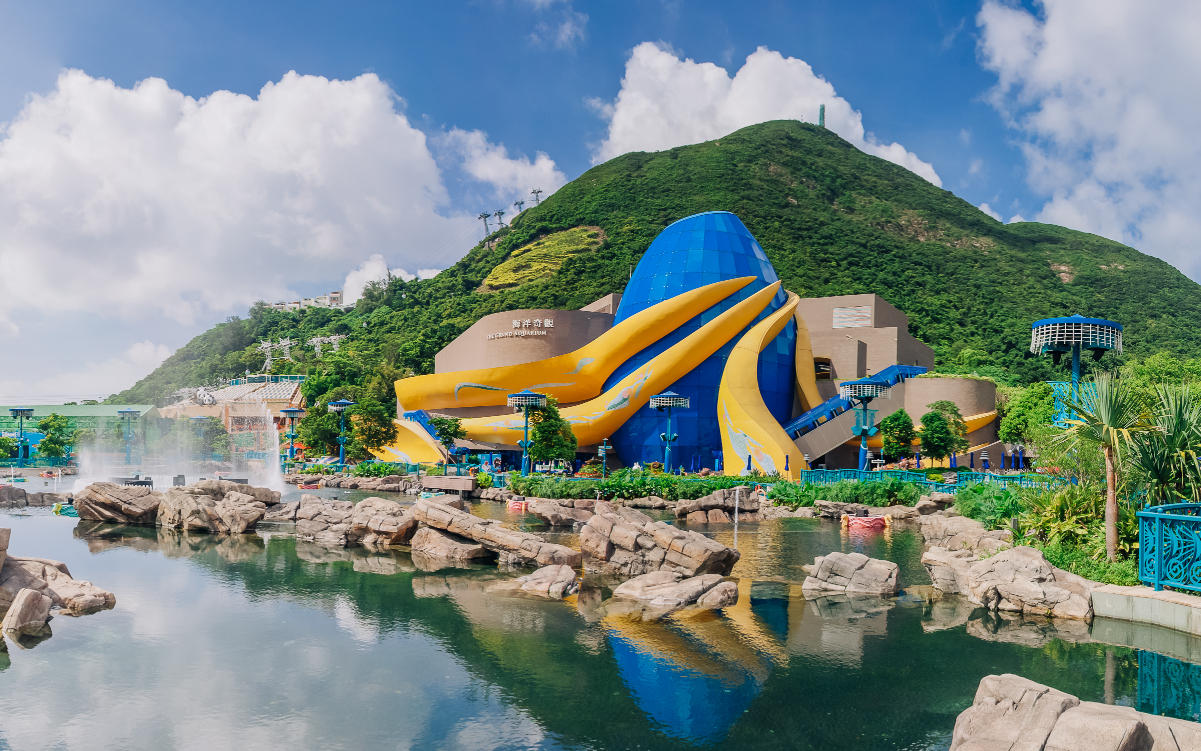Subsequent to the loss of six female hammerhead sharks on 3 November 2013, Ocean Park announces today the completion of the investigation and reveals the cause leading to the death of the animals.
Throughout the past week, Ocean Park conducted a series of thorough investigations, including but not limited to: analyses of necropsy results on the six hammerhead sharks, a review of the animals’ living environment and the Grand Aquarium’s life support system, as well as studying of the animals’ husbandry and medical histories. As reported previously, initial necropsy results indicated that all six hammerhead sharks were in excellent body condition except they had suffered from significant brain lesions, while additional pathological tests showed no signs of poisoning, toxins or infections whether in the form of bacteria, fungus or parasites. Additional investigation of the gill tissue revealed slight microscopic damage at the cell level. Coupled with the brain lesions, results were suggestive of over-exposure to ozone by-product. This led to further investigations by Ocean Park, the Grand Aquarium’s life support system designer and an independent expert regarding the Aquarium’s water conditions and life support system.
Upon further inspection, it is confirmed that the sensor regulating ozone output to the Aquarium’s protein skimmer was affected by weak electrical interference and precipitated the incident by allowing sporadic higher-than-normal dosages of ozone by-products to enter the Aquarium. The electrical interference from nearby electrical equipment produced a weak electrical current within the water pipe. Given water is a highly conductive medium, the small electrical currents entered the water and impacted the first sensor’s readings and signals. Coincidentally, the system’s built-in safety mechanism, a second sensor to prevent excessive ozone output, also experienced an independent malfunction, which measured lower-than-actual ozone by-product levels.
The elevated levels of ozone by-product still fell within the acceptable range according to international aquarium practices and would not pose a threat to most fish and shark species. Unfortunately, the hammerhead sharks, in particular the larger-sized female hammerhead sharks, which are exquisitely sensitive to ozone and its by-products, more so than any other fish or shark species in the Aquarium, were affected by the ozone by-product exposure when they swam by the ozone-treated water’s point of entry into the aquarium. With the sensors providing readings that were within normal ranges, the sporadic higher-than-normal dosages of ozone by-products and the highly localized point of entry into the aquarium, it made detection of slightly higher ozone by-products almost impossible by the normal in-aquarium sensor and the routine measurement practices employed throughout the exhibit.
Ozone and its associated by-products are commonly used to improve water quality and are widely used in swimming pools, waste water treatment and in large, modern aquariums around the world for disinfection, high water quality, and good water clarity. When exposed to excessive dosages of ozone by-products, animals’ gills and metabolic rates may become compromised, and lesions may be caused to the animal’s brain. In the case of the hammerhead sharks, it caused a detrimental impact to their gills and brain. Whilst quick action was taken to turn off the ozone output immediately and flush the Aquarium water, the collaborative expert efforts by the Park’s staff were able to minimize the effect of the ozone by-products for the remaining hammerhead sharks, but it could not save the six female hammerhead sharks.
Since the problem has been determined, actions have been taken to remedy the situation, including identifying and eliminating the source of the electrical interference, replacing the sensors and installing additional independent sensors to cross-check sensor readings. Moreover, the operation protocol of the ozone system has been adjusted such that on the occasion that the ozone level reaches certain required safe levels, the ozone machine will be turned off automatically, and can only be switched back on manually after the equipment is checked and confirmed to be normal. This ensures that safe levels are always maintained.
Ms. Suzanne Gendron, Executive Director of Zoological Operations and Education, said, “We are deeply saddened by this unfortunate incident. We have conducted a thorough review in order to reinforce our current facilities and ensure a safe and healthy living environment is always provided for our animals. The health and wellbeing of our animals remain the utmost priority for us at Ocean Park. There are over 100 aquariums with life support systems similar to ours in the world, including five which have hammerhead sharks. We will share the investigation results of our ozone incident with all related facilities so as to avoid the recurrence of similar incidents in the future.”
The Hong Kong Agriculture, Fisheries and Conservation Department was notified of the necropsy results, and the investigation result will also be sent to them shortly.







